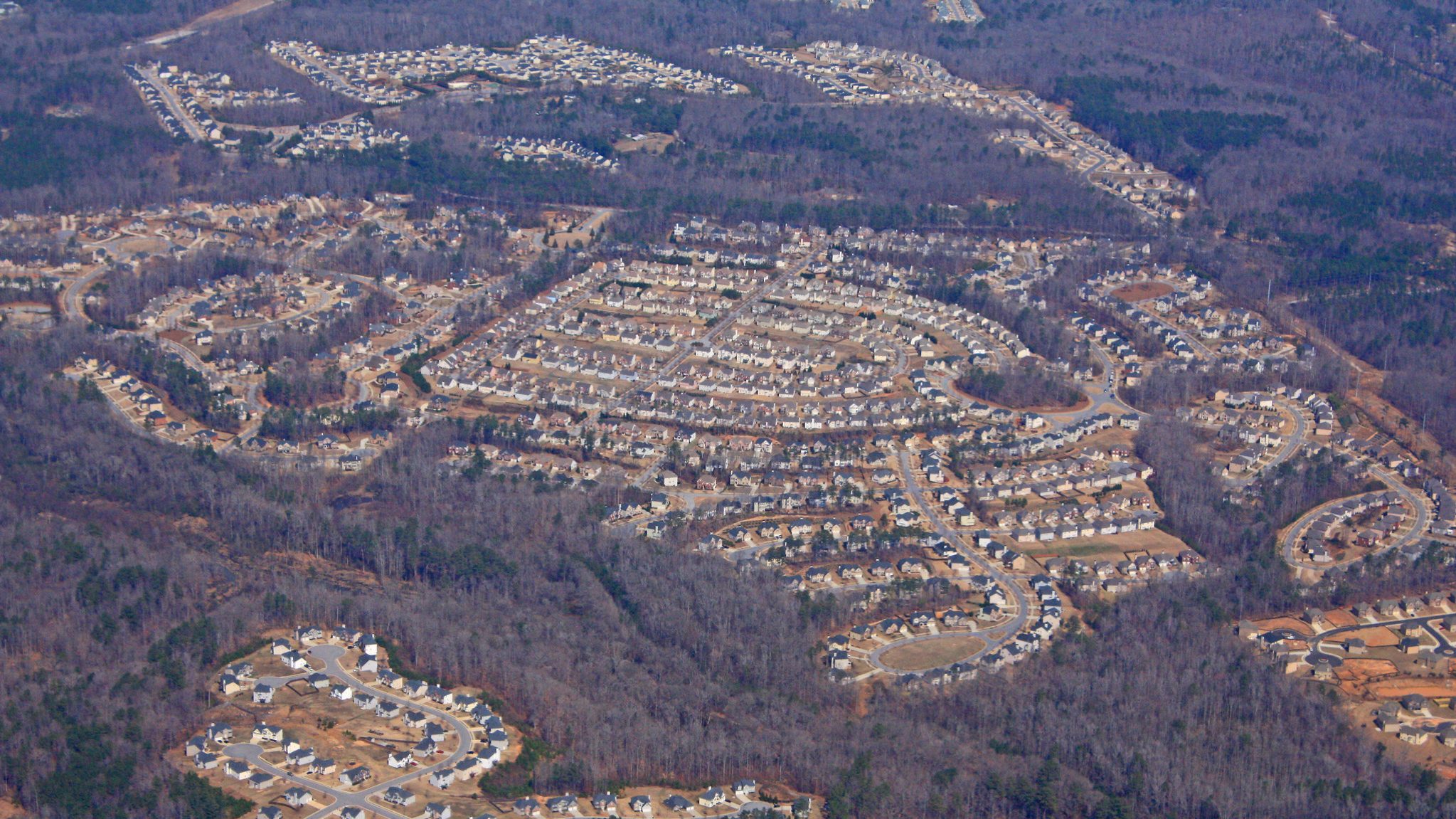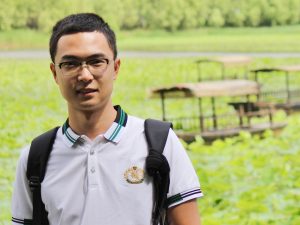Global Change Fellow Jin Bai Explores Urban Biodiversity and Urban Ecology

This semester, the SE CASC Global Change Fellows have worked to create science expert videos that communicate the state of the science of various landscape conservation challenges related to global change in the southeastern United States. Students chose a topic of interest, interviewed an expert in the field, and created an informative video and blog post to share what they learned. The following video and summary were created by SE CASC Global Change Fellow, Jin Bai.
Urban Biodiversity and Urban Ecology

Written by: Jin Bai
Interviewee: Dr. Madhusudan Katti (Associate Professor, College of Natural Resources, NCSU)
The first question posed to Dr. Katti is “What would be the challenges cities face in conserving urban biodiversity in the next 50 years?” One of the challenges cities face is climate change. Cities have experienced the heat island effects that the temperature in cities is higher than in surrounding areas. In addition, the world’s most populous and popular cities are located in coastal areas. Sea level rise is going to be a huge challenge for a significant number of cities around the world. Another challenge cities face is the migration of people driven by climate change, which will accelerate the urbanization trend that may surpass the capacity of cities. At the same time, it will be a challenge for cities to balance the protection of nature, access to nature, and provide spaces for people who live in the cities. From the decision-making process of urban planning, It is crucial to address underlying factors that could influence how resources are used, who has access to them, and who gets to decide what element of nature is to be protected and where it is to be implemented. From the ecological viewpoint, some species have been well-adapted to urban areas, which can be a positive signal that species can thrive in cities. But at the same time, it might create challenges for cities due to increases in incidents of human-wildlife conflicts. The primary challenge for cities is how to manage the density of people, how to manage urban growth while protecting elements of nature for the benefits of human and biodiversity, and how to design cities and restore urban habitat that is equitable to everyone.
The next question is “Can you give me some examples of your past or ongoing research related to urban ecology in the Southeast? What did you find?” Dr. Katti’s research has focused on the social and historical factors that shape cities. Slavery in the American south has left a stamp on housing infrastructure from both the initial growth of cities during slavery and the continuing racial segregations. This is the issue of discrimination in housing policy, which was also an example of institutional racism in a number of cities of the US, including cities in North Carolina. This policy is known as the redlining policy where cities were designed as different zones with different degrees of desirability for living. Redlining can result in visible differences in canopy cover, which can impact urban heat island effects, and the effects are getting worse under climate change. Dr. Katti has utilized a citizen science approach, the Triangle Bird Count, to document bird abundance, diversity, and habitat structure of urban habitats over time, which can help address how historical and economic forces shape the physical geography of the city. Using data from the Triangle Bird Count, Dr. Katti has found that the distribution of birds differs in different zones of the cities due to the effect of racial segregation. He also found that there is a sampling bias from a very popular citizen science project eBird because there are underrepresented survey efforts in marginalized communities. However, there is the potential for developing a better understanding of how humans and other species coexist in cities for us to build better cities where there is more room for nature and also for humans to benefit from it. There is also the potential that having large numbers of people in these urban areas might increase the efficiencies of natural resources use in cities, which might potentially reduce pressures on the landscape of other places. Dr. Katti is interested in how decisions about land use get made in cities, how our cities are transformed by human processes in the context of climate change, and how we can better design cities that ensure the coexistence and reconciliation between humans and nature. The diagram below summarizes the intertwined relationships among Urbanization, Climate change, Environmental Justice, and Urban Biodiversity. Future research in Urban Ecology and Urban Biodiversity needs to examine factors beyond the urbanization effect and integrate Climate Change and Environmental Justice into the research questions, research designs, conservation planning, and habitat restoration efforts.

Resources to learn more about how redlining and racial segregation affect the urban ecosystem and the efforts to conserve land by the current administration:
- Schell, C. J., Dyson, K., Fuentes, T. L., Des Roches, S., Harris, N. C., Miller, D. S., … & Lambert, M. R. (2020). The ecological and evolutionary consequences of systemic racism in urban environments. Science, 369(6510). https://doi.org/10.1126/science.aay4497
- Sorrensen, C. L., Carter, P. L., & Phelps, J. (2015). Urban landscape as mirror of ethnicity: Trees of the South Plains. Urban Geography, 36(7), 1042-1063. https://doi.org/10.1080/02723638.2015.1039397
- Nardone, A., Rudolph, K. E., Morello-Frosch, R., & Casey, J. A. (2021). Redlines and greenspace: the relationship between historical redlining and 2010 greenspace across the United States. Environmental health perspectives, 129(1), 017006. https://doi.org/10.1289/EHP7495
- Connolly, J. J., & Anguelovski, I. (2021). Three histories of greening and whiteness in American cities. Frontiers in Ecology and Evolution, 9, 101. https://doi.org/10.3389/fevo.2021.621783
- Moxley, D., & Fischer, B. (2020). Historic HOLC Redlining in Indianapolis and the Legacy of Environmental Impacts. Journal of Public and Environmental Affairs, 1(1). https://scholarworks.iu.edu/journals/index.php/jpea/article/download/30321/34726/73235
- Locke, D. H., Hall, B., Grove, J. M., Pickett, S. T., Ogden, L. A., Aoki, C., … & O’Neil-Dunne, J. P. (2021). Residential housing segregation and urban tree canopy in 37 US Cities. Urban Sustainability, 1(1), 1-9. https://doi.org/10.1038/s42949-021-00022-0
- Weaver, B. L. (2019). Redlining and Greenspace in Durham, NC. https://blogs.nicholas.duke.edu/env212/redlining-and-greenspace-in-durham-nc/
- Biden’s executive order on conserving 30% of land and water by 2030 (Sec. 216). https://www.whitehouse.gov/briefing-room/presidential-actions/2021/01/27/executive-order-on-tackling-the-climate-crisis-at-home-and-abroad/
- Categories:
